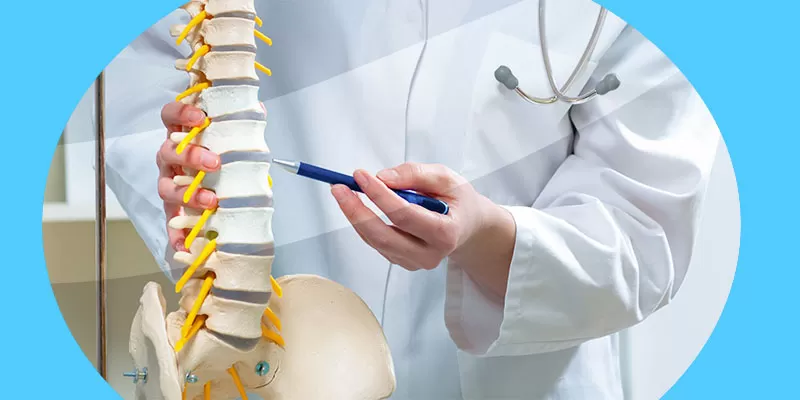Sciatica is the name given to pain caused by irritation of the sciatic nerve. Anything that irritates this nerve can cause pain, ranging from mild to severe. Sciatica is usually caused by a compressed nerve in the lower spine. Often, the term “sciatica” is confused with general back pain. However, sciatica is not just limited to the back.
The sciatic nerve is the longest and widest nerve in the human body. It runs from the lower back, through the buttocks, and down the legs, ending just below the knee.
This nerve controls several muscles in the lower legs and supplies sensation to the skin of the foot and the majority of the lower leg. Sciatica is not a condition, but rather a symptom of another problem involving the sciatic nerve. Up to 40 percent of people will experience sciatica at least once in their life.
Causes of sciatica include:
- Lumbar spinal stenosis – Narrowing of the spinal cord in the lower back.
- Spondylolisthesis – A condition where a disk slips forward over the vertebra below it.
- Tumors within the spine – These may compress the root of the sciatic nerve.
- Infection – Ultimately affecting the spine.
- Cauda equina syndrome – a rare but serious condition that affects the nerves in the lower part of the spinal cord; it requires immediate medical attention.
Risk factors for sciatic nerve pain:
- Age – People in their 30s and 40s have a higher risk of developing sciatica.
- Profession – Jobs that require lifting heavy loads for long periods.
- Sedentary lifestyle – People who sit for long periods and are physically inactive are more likely to develop sciatica, compared with active people.
Although sciatica-like pain can be a problem during pregnancy, sciatica due to a herniated disk is no more likely during pregnancy.
Symptoms of sciatica:
- The main symptom is a shooting pain anywhere along the sciatic nerve; from the lower back, through the buttock, and down the back of either leg.
- Numbness in the leg along the nerve
- Tingling sensation (pins and needles) in the feet and toes
This pain can range in severity and may be aggravated by sitting for long periods.
How Does Calmya work for sciatica?
- “Calmya” a product by Bagdara farms loaded with antiseptic, anti inflammatory, anti bacterial and anti oxidant properties is one of the best medicine and remedy for Sciatica. The credit for potent remedial actions of “Calmya” goes to the polyphenolic compound in it called Curcumin.
Let us see how Curcumin in Calmya can be used to fight the symptom of sciatica:
-
Anti Inflammatory action
Curcumin in Calmya has potent anti-inflammatory properties. It reduces inflammation by a number of different mechanisms by targeting inflammation- inducing molecules. Since pro-inflammatory cytokines produce neuropathic pain and curcumin can suppress the release of inflammatory cytokines.
-
Curcumin is comparable to corticosteroids in producing analgesic effect
Curcumin has similar therapeutic effects to corticosteroids which are commonly used as analgesics against lower back pain in sciatica. But, considering the fact that corticosteroid produce harmful short- term and long- term adverse effects on patients’ health, curcumin should be preferred over corticosteroids.
-
Anti-depressant properties of curcumin
Curcumin can be an efficient alternative to anti-depressants in relieving neuropathic pain in sciatica patients. Its ability to increase the levels of serotonin and dopamine and decrease the levels of monoamine oxidize enzymes make it a potent anti-depressant.
In some cases, sciatica cannot be prevented. However, there are several lifestyle changes that can reduce the chances of developing it, including regular exercise and making sure proper posture is used when standing, sitting upright, and lifting objects.
Click here for more details : https://www.ncbi.nlm.nih.gov/pubmed/27231108


Great information regarding sciatica pain. This post helps with the essential tips to manage sciatica pain. Thank you for sharing the knowledge.
Dear Stella
Thanks. We realise that you also have a spine health clinic. We will be more then happy to have your patients also share the benefit of our research and hard work.